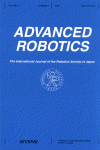
Study of efficiency of USAR operations with assistive technologies
This paper presents a study on efficiency of Urban Search and Rescue (USAR) missions that has been carried out within the framework of the German research project I-LOV. After three years of development, first field tests have been carried out in 2011 by professionals such
as the Rapid Deployment Unit for Salvage Operations Abroad (SEEBA). We present results from evaluating search teams in simulated USAR scenarios equipped with newly developed technical search means and digital data input terminals developed in the I-LOV project. In particular,
USAR missions assisted by the ‘bioradar’, a radar system for the detection of humanoid movements, a semi-active video probe of more than 10m length for rubble pile exploration, a snake-like rescue robot, and the decision support system FRIEDAA were evaluated and compared
with conventional USAR missions. Results of this evaluation indicate that the developed technologies represent an advantage for USAR missions, which are discussed in this paper.
Keywords: USAR; efficiency; emergency communications; endoscope; information management; radar; technical search
Document Type: Research Article
Affiliations: 1: University of Freiburg – IMTEK Laboratory for Electrical Instrumentation, Department of Microsystems Engineering, 79110, Freiburg, Germany 2: University of Linköping AIICS Division, Department of Computer Science, 58183, Linköping, Sweden 3: Ruhr-University Bochum Faculty of Mechanical Engineering, Chair of Engineering Design, 44801, Bochum, Germany
Publication date: 01 April 2013
- Access Key
- Free content
- Partial Free content
- New content
- Open access content
- Partial Open access content
- Subscribed content
- Partial Subscribed content
- Free trial content